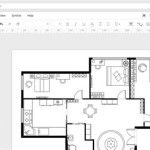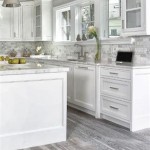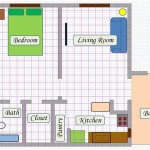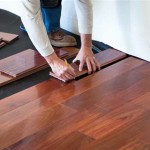What Is The Best Rug Pad For Hardwood Floors?
Selecting the ideal rug pad for hardwood floors is a crucial decision that extends beyond mere aesthetics. A well-chosen rug pad offers a multitude of benefits, including preventing slippage, protecting the floor's finish, enhancing comfort underfoot, and even contributing to sound insulation. However, the sheer variety of rug pads available on the market can make the selection process overwhelming. This article aims to provide a comprehensive guide to navigating the options and identifying the best rug pad for hardwood floors based on specific needs and priorities.
Hardwood floors represent a significant investment in a home's value and appearance. Their longevity and beauty are dependent on proper maintenance and protection. Rugs, while adding warmth and style, can inadvertently damage hardwood floors if not paired with a suitable rug pad. Without a pad, the rug's abrasive backing can scratch the floor's surface. Moreover, trapped dirt and debris between the rug and the floor can act as sandpaper, further exacerbating the damage over time. Certain rug backings, particularly those made of rubber or PVC, can also react with the floor’s finish, causing discoloration or even permanent staining.
Therefore, selecting the right rug pad is not merely a matter of convenience but a necessity for preserving the integrity and appearance of hardwood floors. Considering factors such as material, thickness, and density is essential to ensure both optimal protection and enhanced comfort. This article will explore the different types of rug pads available, analyze their advantages and disadvantages for hardwood floors, and provide specific recommendations tailored to various rug types and traffic levels.
Key Considerations for Choosing Rug Pads for Hardwood Floors
Before delving into the specifics of different rug pad types, it is crucial to understand the key factors that influence their suitability for hardwood floors. These considerations will help narrow down the options and make a more informed decision.
Material: The material composition of the rug pad is arguably the most important factor. Some materials are specifically designed to be safe for hardwood floors, while others can cause damage. Natural rubber, felt, and a combination of felt and natural rubber are generally considered safe and effective choices. Avoid rug pads made of PVC or other synthetic materials that can leach chemicals and damage the floor's finish.
Thickness and Density: The thickness and density of the rug pad determine its level of cushioning and protection. Thicker pads provide more cushioning and can help reduce noise transmission. However, excessively thick pads can create a tripping hazard or make it difficult to open doors. Density refers to the amount of material packed into a given volume. A denser pad will offer better support and durability than a less dense one.
Grip and Stability: Preventing the rug from slipping is a primary function of a rug pad. A good rug pad should provide ample grip to keep the rug securely in place, even in high-traffic areas. Natural rubber pads typically offer excellent grip, while felt pads may require a non-slip backing or adhesive for optimal stability.
Breathability: Hardwood floors require adequate airflow to prevent moisture buildup and potential damage. A breathable rug pad allows air to circulate beneath the rug, reducing the risk of mold or mildew growth. Natural materials like felt and natural rubber are generally more breathable than synthetic alternatives.
Types of Rug Pads Suitable for Hardwood Floors
The market offers a diverse range of rug pads, each with its own unique characteristics and suitability for hardwood floors. Understanding the different types and their properties is essential for making an informed decision.
Felt Rug Pads: Felt rug pads are made from compressed fibers, typically wool or synthetic materials. They are known for their excellent cushioning, sound absorption, and insulation properties. Felt pads provide a soft and comfortable feel underfoot and can help protect hardwood floors from scratches and dents. However, felt pads generally lack the grip necessary to prevent rugs from slipping, so they often require a non-slip backing or adhesive to be truly effective. Furthermore, felt pads can be susceptible to absorbing spills, which can lead to staining or mold growth if not promptly addressed.
Natural Rubber Rug Pads: Natural rubber rug pads are made from sustainably harvested rubber trees. They offer excellent grip and prevent rugs from slipping on hardwood floors. Natural rubber is also a naturally breathable material, which helps prevent moisture buildup and promotes airflow. These pads are generally quite thin, which can be an advantage in areas with low door clearance. While thinner, they compensate with their excellent grip. They are well-suited for high-traffic areas where safety and stability are paramount. However, it's crucial to ensure the rubber is genuinely natural and not mixed with synthetic materials, which can damage hardwood floors.
Felt and Rubber Combination Rug Pads: These rug pads combine the benefits of both felt and natural rubber. They typically consist of a layer of felt for cushioning and a layer of natural rubber for grip. This combination provides both comfort and stability, making them a popular choice for hardwood floors. They offer a good balance of cushioning, grip, and floor protection. The felt layer adds a layer of comfort and sound absorption, while the rubber layer helps prevent the rug from sliding. These pads are available in various thicknesses to suit different needs and rug types.
Memory Foam Rug Pads: Memory foam rug pads are known for their exceptional cushioning and pressure relief. They conform to the shape of the foot, providing a luxurious and comfortable feel underfoot. Memory foam can also help absorb impact and reduce noise transmission. However, memory foam is not the most breathable material, potentially trapping moisture. Moreover, its softness might not provide the best support for heavy furniture and might compress easily over time, reducing its effectiveness. They are best suited for low-traffic areas where comfort is a priority.
Waffle-Grip Rug Pads: These rug pads feature a waffle-like pattern on the surface, providing a non-slip grip on both the rug and the floor. They are typically made of synthetic materials, such as PVC or vinyl. While they offer good grip, these pads are generally not recommended for hardwood floors. The synthetic materials can leach chemicals and damage the floor's finish. They also lack the cushioning and breathability of natural materials. Over time, the grid pattern can also leave indentations in the floor.
Selecting the Right Rug Pad Thickness
The ideal rug pad thickness depends on several factors, including the type of rug, the amount of traffic in the area, and personal preferences. Here are some general guidelines:
Thin rugs (under 1/4 inch): For thin rugs, a thicker rug pad (1/4 to 1/2 inch) can add significant cushioning and comfort. This can also help prevent the rug from feeling too thin or flimsy. However, avoid pads that are excessively thick, as they can create a tripping hazard.
Medium rugs (1/4 to 1/2 inch): For medium rugs, a medium-thickness rug pad (1/4 to 3/8 inch) is typically sufficient. This will provide adequate cushioning and support without being too bulky.
Thick rugs (over 1/2 inch): For thick rugs, a thinner rug pad (1/8 to 1/4 inch) may be all that is needed. The rug itself already provides a significant amount of cushioning. A thinner pad will primarily serve to prevent slipping and protect the floor.
High-traffic areas: In high-traffic areas, a thicker, denser rug pad is recommended. This will provide more cushioning and support, as well as better protection for the floor. Consider a felt and rubber combination pad with a thickness of at least 1/4 inch.
Low-traffic areas: In low-traffic areas, a thinner rug pad may be sufficient. This will still provide some cushioning and protection, but it will not be as bulky or expensive as a thicker pad. A natural rubber pad or a thin felt pad with a non-slip backing may be suitable.
Installation and Maintenance of Rug Pads
Proper installation and maintenance are crucial for maximizing the lifespan and effectiveness of rug pads. Follow these guidelines to ensure optimal performance:
Proper Sizing: The rug pad should be slightly smaller than the rug, typically about 1-2 inches smaller on each side. This allows the rug to lie flat and prevents the pad from being visible around the edges.
Cleaning: Regularly vacuum the rug pad to remove dirt and debris. For spills, blot the area immediately with a clean cloth. Avoid using harsh chemicals or cleaning agents, as they can damage the pad or the floor.
Rotation: Periodically rotate the rug pad to distribute wear evenly. This can help extend its lifespan and prevent it from becoming compressed in certain areas.
Replacement: Replace the rug pad when it becomes worn, compressed, or damaged. A worn rug pad will no longer provide adequate cushioning or protection for the floor. This is especially important for high-traffic areas.

Non Slip Rug Pad Options For Hardwood Flooring And More

What Type Of Non Slip Rug Pad Is Best For Hardwood Floors Rugpad

The Best Rug Pads Reviews By Wirecutter

Best Area Rug Pad For Hardwood Floors The Flooring Girl

The Best Rug Pads Reviews By Wirecutter

Rug Pads For Hardwood Floors Rugpadusa
What Do You Put Under Rugs On Hardwood Floors Quora

The 7 Best Rug Pads Of 2024 Purewow

How To Choose A Rug Pad For Hardwood Floor Yorkshire Bedding

Best Rug Pads For Hardwood Floors Seer Flooring








